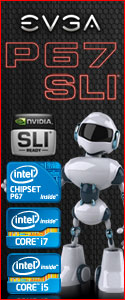Insatallation
We the used ASUS Rampage Two Extreme motherboard and an Intel i7 920 CPU for our test mule today, so obviously we elected the Common and the Intel Packet. In the first instance the support bracket that sits underneath the motherboard to clamp the whole affair to the CPU feels reassuringly solid with a good non conductive layer between it and the underside of the motherboard. Note: we have in the past seen a generic steel X support with a foam protector short out a CPU socket when clamped down tight. When this occurred the foam was penetrated by a couple of solder points and this resulted in a spectacular motherboard failure!
The ‘X’ support is to be used on an lga1366 socket so the rubber centre spacer is removed as per instructions and the 4 bolts fitted through the lga1366 holes identified on the instructions. It does however make a special point of warning lga1566 owners to check the holes they use are correct to avoid misalignment problems with fitting later.
The former mentioned ‘X’ is presented from beneath the board with the bolts in the right holes, a neat fit and held in place by the rubber insulator so there are no issues trying to hold it all in place while installing the top brackets from the other side. The upper brackets for Intel are two crescents with a threaded stud pointing up on either side. Pay close attention to the orientation of the crescents here as they decide the way your main cooler body will fit to the motherboard. There is another hint about not allowing the bend in the heatpipes to be at the top of tower case setups or this may result in ‘reduced cooling performance.
We appreciate having the facility to fit the main cooler body separate to getting the mountings tied onto the motherboard.
We are installing on a motherboard tray outside the pc but if the tray has an access hole at the rear then this is all very doable and without taking your mainboard out of the case. TIM tube opened and we have to mention that this is not a generic tube of thermal paste but rather another of Noctua’s line of products. The syringe has a neat screw off tip to prevent accidental splurging in the packet or your parts box. The main cooler head with fans on is applied to the CPU with the two mounting screws lined up with the studs on the upper mainboard brackets. The included long right angled screwdriver is fed gently through the fan blades and the special holes in the fin stack to make contact with the retaining screw heads.
Finally a few seconds to wind it down to a firm seating either side and the cooler now feels like part of the system now
Testing
Realtemp was utilised for a view of the effectiveness and a quick foray into the BIOS in order to overclock the CPU. This particular one is hanging around as its not the greatest clocker so we will not be heading for the stratosphere today namely 3.8ghz will do on 1.3Volts Here we have the results of a 100% load test and then the next test is the completed run with temps and the load dropping as we go. Ambient in the room is 22c. The first set of results is with the Noctua NH-C14 fans on full at the aforementioned speeds, the rest are on stock frequencies.
 |
 |
Now we’ll try the same clock with the low noise adapters and see how much hotter/quieter we run ( hardly worth it unless you are using it on an HTPC as its barely audible outside the case anyway…but they are included so we have to check. The first screenshot shows the black and the second shows the blue adapters.
 |
 |
So there we have it, effective and quiet too. It is not clear from the instructions which of the blue/black voltage droppers are which. Check your system carefully before using the Ultra low noise adaptors in case you cook your cpu as the fans are not of PWM variety and wont spin up to keep things in check for you.
To measure against a standard we used Intel’s generic heatsink cooler and as a control test we used this in conjunction with Noctua’s own heatsink compound.
 |
The above shows that there is a lesson to be learned here and not to use standard Intel heatsinks other than to A: Run at default Frequencies B: If you are on a budget.
It is a shame we could not test this product with other coolers out on the market, however we are a water cooling enthusiast review site and to us air cooling comes a distant second. Given the results above this cooler performs as well as a STANDARD water cooling system such as those ‘all in one kits’ that are below £100 however these performance results come nowhere near that of a professional water cooling system.



 Posted in
Posted in 






